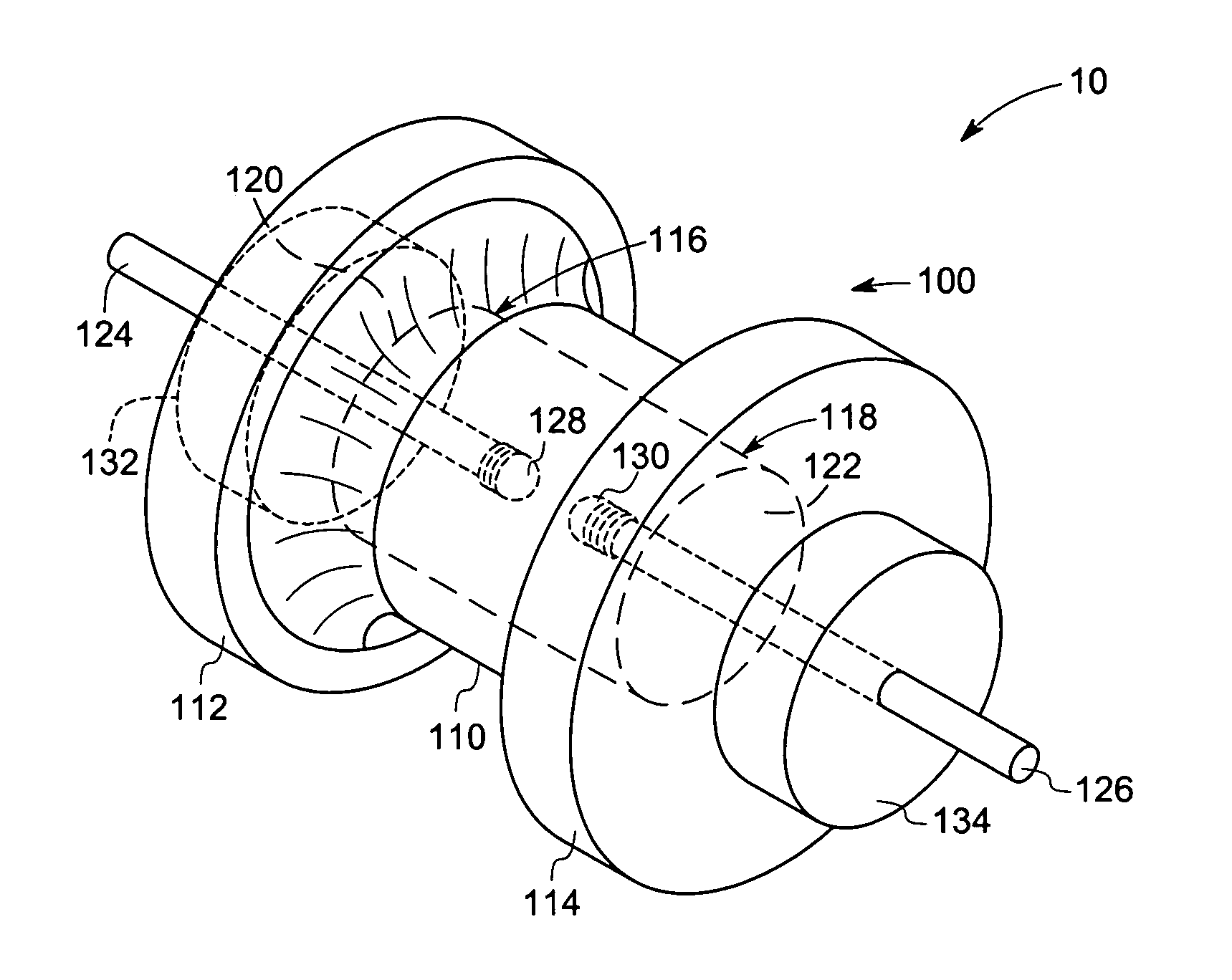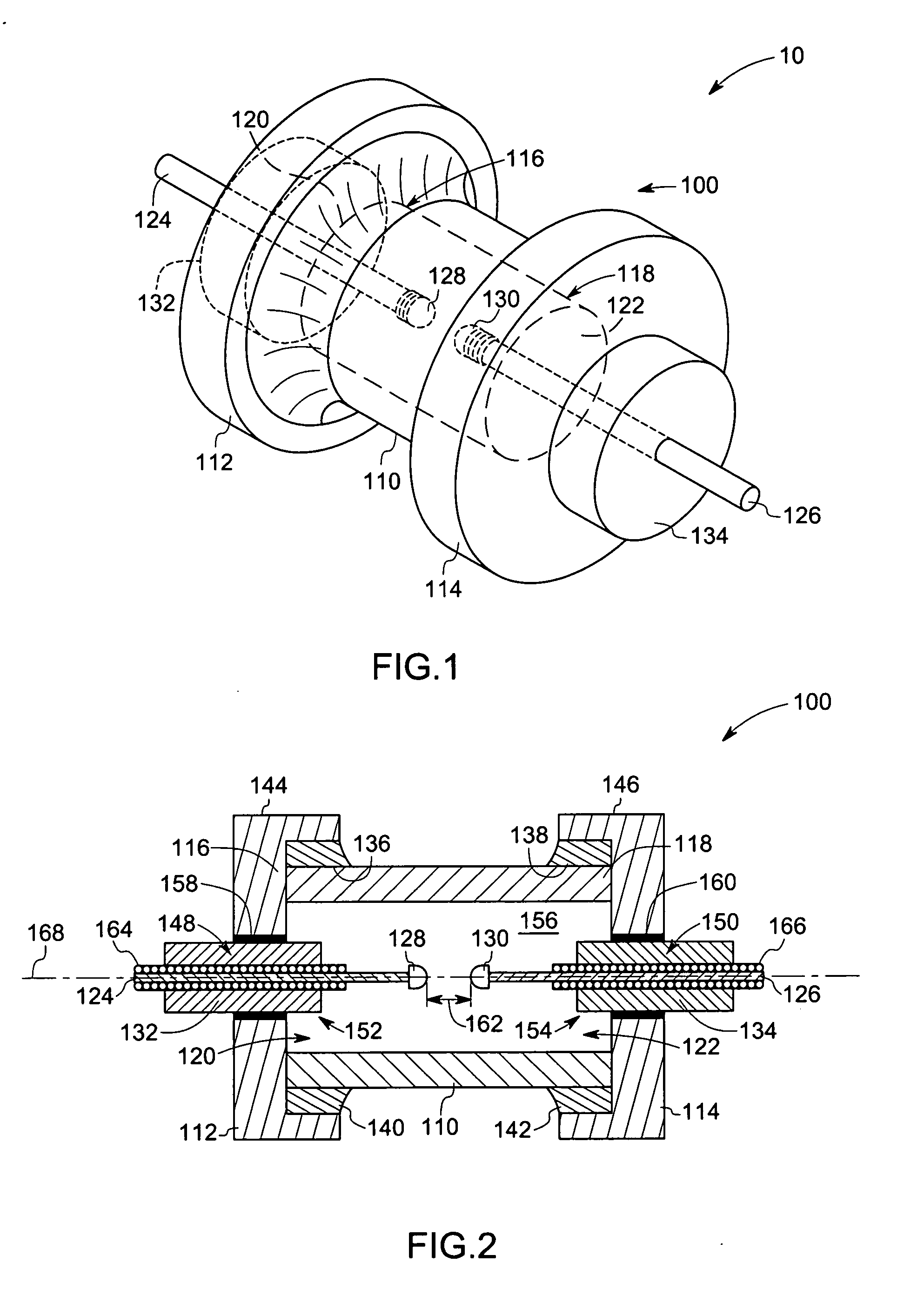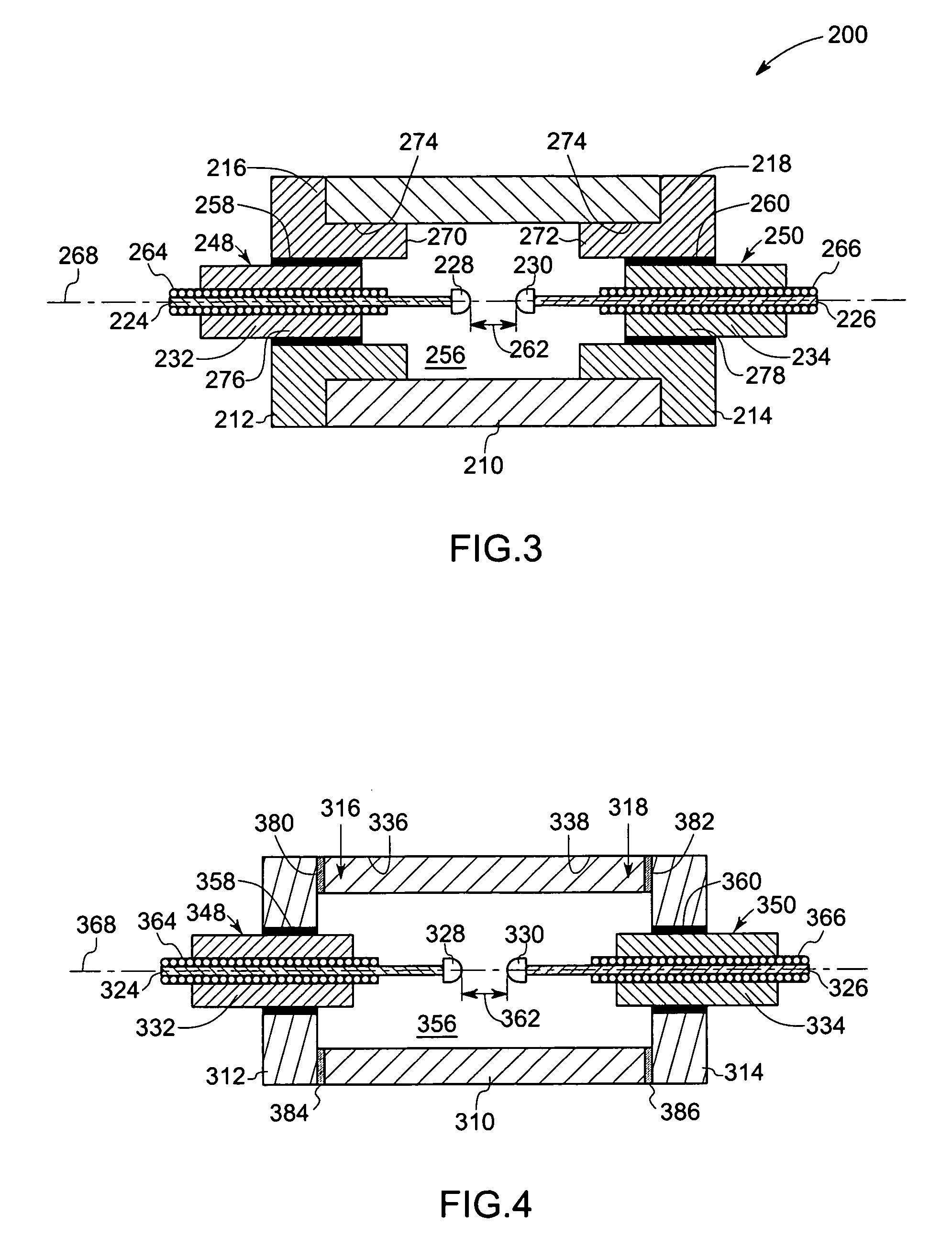Ceramic lamp having molybdenum-rhenium end cap and systems and methods therewith
a technology of molybdenum rhenium end cap and ceramic lamp, which is applied in the manufacture of electrode systems, electric discharge tubes/lamps, cold cathode manufacturing, etc., can solve the problems of thermal stress cracks during lamp operation, significant challenges in the process of joining different materials in high-temperature lamps, and inability to chemically resist halide species
- Summary
- Abstract
- Description
- Claims
- Application Information
AI Technical Summary
Benefits of technology
Problems solved by technology
Method used
Image
Examples
Embodiment Construction
[0017] Embodiments of the present technique provide unique ceramic arc lamps comprising an arc envelope having a molybdenum-rhenium end structure, which improves performance and mechanical stability of the lamp. The metallic end structure design also desirably provides better thermal stress management during lamp start-up and better thermal management of cold spot temperature. In certain embodiments, these lamps include dosing tubes to facilitate dosing without the use of a hot furnace and dry box environment. In some embodiments, the concentration of rhenium in the molybdenum rhenium alloy is in a range from about 5% to about 60% by weight. In certain other embodiments, the rhenium concentration is in a range from about 10% to about 55% by weight. In some other embodiments, the rhenium concentration is in a range from about 38% to about 48%. The unique features introduced above are described in detail below with reference to figures of several exemplary embodiments of the present t...
PUM
 Login to View More
Login to View More Abstract
Description
Claims
Application Information
 Login to View More
Login to View More - R&D
- Intellectual Property
- Life Sciences
- Materials
- Tech Scout
- Unparalleled Data Quality
- Higher Quality Content
- 60% Fewer Hallucinations
Browse by: Latest US Patents, China's latest patents, Technical Efficacy Thesaurus, Application Domain, Technology Topic, Popular Technical Reports.
© 2025 PatSnap. All rights reserved.Legal|Privacy policy|Modern Slavery Act Transparency Statement|Sitemap|About US| Contact US: help@patsnap.com



